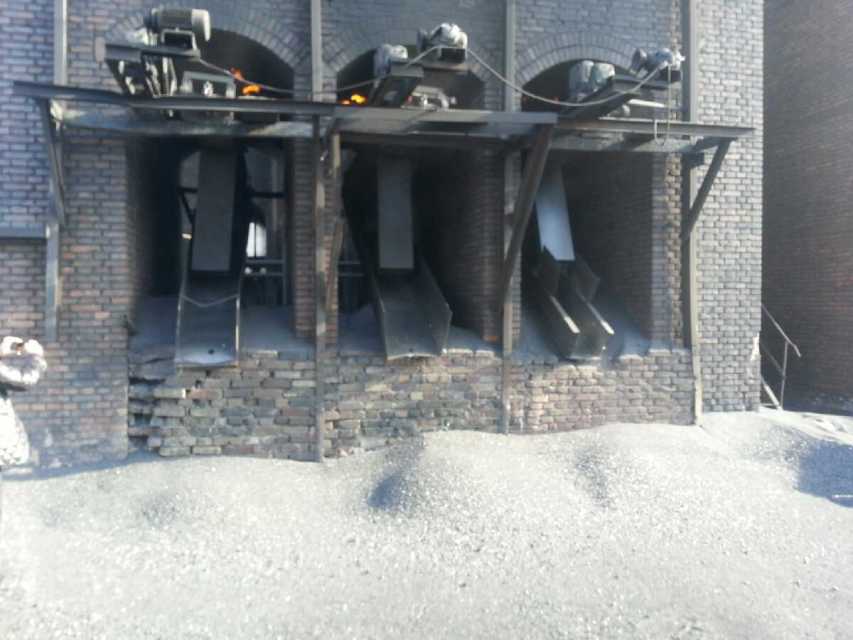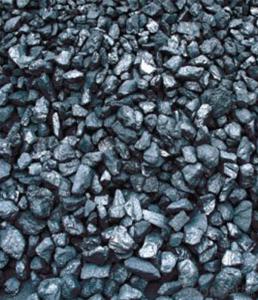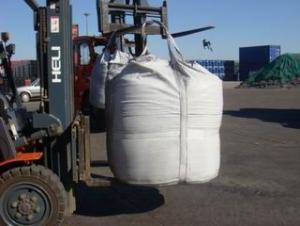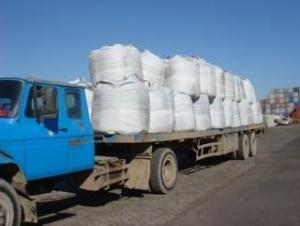FC 95min Calcined Anthracite Coal With High Quality
- Loading Port:
- China main port
- Payment Terms:
- TT OR LC
- Min Order Qty:
- 0 m.t.
- Supply Capability:
- 20000 m.t./month
OKorder Service Pledge
Quality Product, Order Online Tracking, Timely Delivery
OKorder Financial Service
Credit Rating, Credit Services, Credit Purchasing
You Might Also Like
Features
Calcined Anthracite Coal
Fixed carbon: 90%-95%
S: 0.5% max
Size: 0-3. 3-5.3-15 or as request
Product Description
Calcined Anthracite coal is produced using the best Anthracite-Taixi Anthracite with low S and P, It is widely used in steel making and casting.
General Specification
PARAMETER UNIT GUARANTEE VALUE | |||||
F.C.% | 95MIN | 94MIN | 93MIN | 92MIN | 90MIN |
ASH % | 4MAX | 5MAX | 6MAX | 7MAX | 8MAX |
V.M.% | 1 MAX | 1MAX | 1.5MAX | 1.5MAX | 1.5MAX |
SULFUR % | 0.5MAX | 0.5MAX | 0.5MAX | 0.5MAX | 0.5MAX |
MOISTURE % | 0.5MAX | 0.5MAX | 0.5MAX | 0.5MAX | 0.5MAX |
Size can be adjusted based on buyer's request
Pictures



- Q:How is carbon used in the medical field?
- Carbon is used in various ways in the medical field due to its unique properties. One of the most common applications of carbon is in the form of activated charcoal, which is widely used in hospitals to treat cases of poisoning or drug overdoses. Activated charcoal has a large surface area, allowing it to adsorb toxins and chemicals, preventing them from being absorbed into the bloodstream. Carbon is also utilized in medical imaging techniques such as positron emission tomography (PET) scans. In PET scans, a radioactive form of carbon, known as carbon-11, is used to label molecules such as glucose. This labeled carbon is then injected into the patient, and its distribution in the body is detected by a PET scanner. This technique helps in the diagnosis and monitoring of various diseases, including cancer, by visualizing metabolic activity in different organs and tissues. Furthermore, carbon-based materials, such as carbon nanotubes and graphene, are extensively studied for their potential applications in drug delivery systems. These materials can be modified to carry therapeutic agents, such as drugs or genes, and deliver them to specific targets in the body. Carbon nanotubes, in particular, have shown promising results in enhancing drug delivery efficiency and reducing side effects. Moreover, carbon is used in the manufacturing of medical devices and implants. Carbon fiber-reinforced polymers are employed in orthopedic implants and prosthetics due to their strength, flexibility, and biocompatibility. Carbon-based materials also play a crucial role in the production of electrodes for various medical devices like pacemakers, defibrillators, and neurostimulators. In summary, carbon finds numerous applications in the medical field, ranging from treating poisonings to enhancing diagnostic imaging techniques, drug delivery systems, and the production of medical devices. It continues to be an essential component in advancing medical technology and improving patient care.
- Q:Why carbon 14 can be used to measure the age of matter?
- Libby believes that when plants alive, because continue to carry out photosynthesis, carbon dioxide (including carbon 12 and carbon 14) continue to enter the plant, plant eaten animal, carbon 14 and entering into the body of the animal. The animals and plants 14 carbon content but is constantly changing, Once the plant or animal died, the plant will not absorb carbon dioxide in the atmosphere, the animal will no longer eat plants.
- Q:Well, recently, the carbon cycle has suddenly come up with a lot of questions. What's the definition of carbon and light carbon? What are the characteristics, and what are the differences between the two?
- Light and heavy soil organic matter is divided according to the proportion of the isolates used in this study. The proportion of 1.7 is the proportion of < 1.7 for light fraction organic matter, the proportion of > 1.7 recombinant organic matter. The composition and decomposition of organic carbon in different components are significantly different. Light fraction organic matter by no solution complete plant residues and its fractions include a small amount of live microorganisms or their secretions, is susceptible to microbial decomposition and utilization characteristics, is very sensitive to climatic and environmental changes and agricultural management measures, is the active carbon pool in soil.
- Q:How does carbon impact the formation and intensity of hurricanes?
- Carbon dioxide (CO2) and other greenhouse gases contribute to the warming of the Earth's atmosphere, leading to global climate change. This increased warming affects the formation and intensity of hurricanes. Warmer ocean temperatures provide more energy for hurricanes to form and strengthen, making them more intense. Additionally, higher levels of atmospheric moisture due to increased evaporation from warmer oceans also contribute to the formation and intensity of hurricanes. Therefore, carbon emissions play a significant role in the impact of hurricanes by fueling their formation and increasing their destructive potential.
- Q:What are the effects of carbon emissions on the stability of volcanic regions?
- Carbon emissions can potentially have both positive and negative effects on the stability of volcanic regions. On one hand, increased carbon dioxide levels in the atmosphere can contribute to global warming, which in turn may lead to melting of glaciers and ice caps, resulting in a rise in sea level. This rise in sea level can increase the likelihood of volcanic flank collapse, as the added pressure weakens the stability of volcanic slopes. Additionally, global warming can also trigger more frequent and intense rainfall, potentially leading to increased erosion and landslides in volcanic areas. On the other hand, carbon dioxide emissions can also have a stabilizing effect on volcanic regions. The injection of carbon dioxide into volcanic systems can enhance the pressure within magma chambers, promoting magma crystallization and solidification. This process can reduce the likelihood of volcanic eruptions, as the solidified magma acts as a barrier that hinders the movement and release of magma. Overall, the effects of carbon emissions on the stability of volcanic regions are complex and dependent on various factors. It is crucial to continue studying these interactions to better understand the potential consequences and implications for volcanic hazards and the overall stability of volcanic regions.
- Q:15CrMo seamless steel tube and carbon plate welding fracture what is the reason?
- That's the problem of too much stress in the welding! 15CrMo material after quenching is very brittle, local high temperature welding, then there is no insulation measures, fast cooling speed caused by the welding part of a slight quenching appear, so the stress concentration caused by cold cracking!It is recommended that the 15CrMo pipe be heated to 150 degrees before welding! Pay attention to heat preservation after welding!If the heat treatment process needs to be welded, the heating rate is 200 degrees /h, rise to 715, holding 1 hours and 15 minutes, the cooling rate is 100 degrees /h, and the air cooling is down to 300 degrees centigrade.
- Q:How does carbon affect the formation of droughts?
- The formation of droughts is significantly influenced by carbon dioxide (CO2) and other greenhouse gases. Human activities, such as the burning of fossil fuels and deforestation, have caused an increase in carbon emissions, leading to higher concentrations of CO2 in the atmosphere. This rise in CO2 acts like a blanket, trapping heat and causing the Earth's average temperature to rise, a phenomenon known as global warming. As global warming occurs, the hydrological cycle, which regulates the availability of water on Earth through evaporation, condensation, and precipitation, becomes more intense. Warmer temperatures increase the rate of evaporation, resulting in more moisture being stored in the air. This increased moisture content can lead to heavier rainfall and more severe storms in certain areas. However, despite the increase in extreme rainfall events, global warming also causes a decrease in overall precipitation in many regions. Higher temperatures cause more evaporation from soil, lakes, and rivers, depleting available water sources. Consequently, droughts become more frequent and severe. Moreover, the warming climate alters atmospheric circulation patterns, such as the jet stream, which affects weather systems. These changes can cause shifts in precipitation patterns, resulting in more regions experiencing prolonged dry periods and exacerbating the risk of drought. Additionally, the impacts of carbon emissions and global warming go beyond their direct effects on precipitation. Rising temperatures accelerate the rate of evapotranspiration, the process through which water is transferred from the land to the atmosphere via evaporation from the soil and transpiration from plants. This increased evapotranspiration leads to higher water demand from vegetation and crops, further contributing to water scarcity and drought conditions. In conclusion, carbon emissions and global warming have a significant impact on the formation of droughts. The increase in CO2 concentrations traps heat, leading to increased evaporation rates, changes in atmospheric circulation, and shifts in precipitation patterns. These factors, combined with higher evapotranspiration rates, result in more frequent and severe droughts. To reduce the risk and impact of droughts in the future, it is crucial to address carbon emissions and take measures to mitigate climate change.
- Q:What are the effects of carbon emissions on animal populations?
- Carbon emissions have profound effects on animal populations. One of the main consequences is the disruption of ecosystems and the loss of habitats. As carbon dioxide levels rise in the atmosphere, the Earth's temperature increases, leading to climate change. This change in climate can alter the availability of resources such as food and water, making it more difficult for animals to survive and reproduce. Additionally, carbon emissions contribute to ocean acidification. When carbon dioxide is absorbed by seawater, it reacts with water to form carbonic acid, which lowers the pH of the ocean. This acidification has detrimental effects on marine life, especially on species that rely on calcium carbonate to build their shells or skeletons, such as corals and shellfish. As their habitats become more corrosive, these animals struggle to survive and reproduce, leading to significant declines in their populations. Furthermore, carbon emissions are often associated with air pollution, which has direct and indirect impacts on animal populations. High levels of air pollution, specifically from pollutants like nitrogen dioxide and particulate matter, can cause respiratory problems and other health issues in animals. This can lead to reduced fitness and increased mortality rates, ultimately affecting the overall population size. Lastly, carbon emissions contribute to deforestation and habitat destruction. As more land is cleared for human activities like agriculture or urbanization, animal populations lose their natural habitats and are forced to adapt to fragmented landscapes. This fragmentation restricts their movement, limits access to resources, and increases their vulnerability to predation and other threats. In conclusion, carbon emissions have far-reaching effects on animal populations, including habitat loss, climate change, ocean acidification, air pollution, and deforestation. These impacts disrupt ecosystems and threaten the survival of many animal species. It is crucial to address carbon emissions and reduce our carbon footprint to mitigate these detrimental effects and protect the diversity of life on Earth.
- Q:What role does carbon play in the carbon cycle?
- Carbon plays a crucial role in the carbon cycle as it is the key element that cycles through various reservoirs on Earth. It is present in both organic and inorganic forms and moves between the atmosphere, oceans, land, and living organisms. The carbon cycle is a complex process that involves several interconnected processes, including photosynthesis, respiration, decomposition, and combustion. In the atmosphere, carbon exists primarily as carbon dioxide (CO2) gas, which is essential for photosynthesis. Green plants and algae absorb CO2 during photosynthesis, converting it into organic compounds such as glucose and releasing oxygen as a byproduct. This process helps to regulate the amount of carbon dioxide in the atmosphere and provides the foundation for the food chain. Through respiration, living organisms break down organic compounds to release energy, producing carbon dioxide as a waste product. This carbon dioxide can be immediately reused by plants during photosynthesis, completing the cycle. Additionally, when organisms die, their remains are broken down by decomposers, such as bacteria and fungi, which release carbon dioxide back into the atmosphere. The carbon cycle also involves the transfer of carbon to and from the oceans. Carbon dioxide dissolves in seawater, where it can be taken up by marine organisms, such as phytoplankton and corals, during photosynthesis. Over time, the remains of these organisms sink to the ocean floor and can become locked away in sediments, forming fossil fuels like coal, oil, and natural gas. Through geological processes, these fossil fuels can be released back into the atmosphere when burned, contributing to increased carbon dioxide levels. Human activities, particularly the burning of fossil fuels and deforestation, have significantly impacted the carbon cycle. Excessive carbon dioxide emissions from these activities have led to an imbalance in the cycle, causing an increase in atmospheric carbon dioxide concentrations and contributing to global climate change. Overall, carbon plays a critical role in the carbon cycle as it is the fundamental building block of life and the key element that cycles through various reservoirs, regulating Earth's climate and sustaining life on our planet.
- Q:I don't know the battery. Although I know the former is chemical energy, I want to know if the 1 grain size 5 can compare the charge capacity with the 1 grain 5 1ANot much of a fortune, but thank you very much for the enthusiastic friend who gave me the answer. Thank you!
- The carbon battery voltage is 1.5V, and the rechargeable battery is only 1.2V. That depends on the capacity of the rechargeable battery. You mean 1000MA?
1. Manufacturer Overview |
|
|---|---|
| Location | |
| Year Established | |
| Annual Output Value | |
| Main Markets | |
| Company Certifications | |
2. Manufacturer Certificates |
|
|---|---|
| a) Certification Name | |
| Range | |
| Reference | |
| Validity Period | |
3. Manufacturer Capability |
|
|---|---|
| a)Trade Capacity | |
| Nearest Port | |
| Export Percentage | |
| No.of Employees in Trade Department | |
| Language Spoken: | |
| b)Factory Information | |
| Factory Size: | |
| No. of Production Lines | |
| Contract Manufacturing | |
| Product Price Range | |
Send your message to us
FC 95min Calcined Anthracite Coal With High Quality
- Loading Port:
- China main port
- Payment Terms:
- TT OR LC
- Min Order Qty:
- 0 m.t.
- Supply Capability:
- 20000 m.t./month
OKorder Service Pledge
Quality Product, Order Online Tracking, Timely Delivery
OKorder Financial Service
Credit Rating, Credit Services, Credit Purchasing
Similar products
New products
Hot products
Hot Searches





























